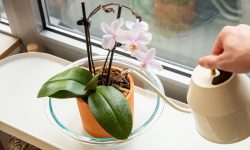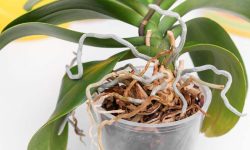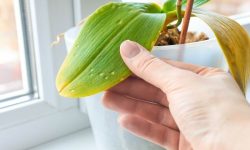Orchids are a type of flowering plant that can be found in nearly every corner of the globe. They come in an astounding array of colors, shapes, and sizes, and their flowers can last for weeks or even months at a time. Though they are often thought of as being delicate and finicky plants, many species of Orchid are actually quite easy to care for.
One thing that sets Orchids apart from other types of plants is that they do not require pollination by bees or other insects in order to produce seeds. Instead, they are capable of asexual reproduction, meaning that they can reproduce without the need for another individual Orchid plant.
Orchids are a beautiful and popular type of flower, but did you know that they’re also asexual? That’s right – orchids don’t need any help from bees or other insects to reproduce. Instead, they can do it all on their own!
So how do they do it? Orchids produce specialised seeds that don’t need pollination in order to grow. The flowers will self-pollinate when they bloom, and the resulting seeds will grow into new plants.
Pretty amazing, right?
If you’re thinking of growing orchids yourself, then you’ll be pleased to know that they’re very easy to care for. Just remember to give them plenty of light and water, and you’ll soon have a stunning display of these unique flowers.
Norman Fang Live! Episode 53 – Asexual Propagation of Orchids – A How To
How Does a Orchids Reproduce?
Orchids are one of the most popular and well-known flowers in the world. Many people think of them as being very delicate and difficult to care for, but they are actually quite easy to grow once you understand their basic needs. One of the most interesting things about orchids is their method of reproduction.
Most other flowers reproduce by producing seeds that will grow into new plants. Orchids, on the other hand, reproduce without producing any seeds at all!
The process begins when a pollinator, such as a bee or butterfly, collects pollen from the male parts of an orchid plant and transfers it to the female parts of another plant.
The pollen then comes into contact with a tiny structure called an ovule, which fertilizes it. This process produces a seedless fruit that contains hundreds or even thousands of tiny embryos. Over time, these embryos develop into new plants that are clones of their parents.
This fascinating reproductive strategy has several benefits for orchids. First, because they don’t produce any seeds, they don’t have to put any energy into developing them. This means that more resources can be devoted to growing leaves and flowers.
Second, cloning ensures that each new generation is genetically identical to its parents, so there’s no need for variation (which can be important for survival in harsh conditions). Finally, because orchids can clone themselves indefinitely, they effectively immortal!
Can Orchids Be Male Or Female?
Orchids are unique among flowering plants in that they can be either male or female. Most other plants have flowers that contain both male and female reproductive organs, but orchids lack one sex or the other. This means that an orchid flower must be pollinated by another flower of the opposite sex in order to produce seed.
So, why would a plant want to be either male or female? The answer has to do with survival. If an orchid is able to produce both sexes of flowers, it can pollinate itself and doesn’t need another plant to do it for it.
However, this also means that any pollen produced by the plant will be wasted on self-pollination and won’t fertilize any other flowers.
By producing only male or female flowers, an orchid ensures that its pollen will be used to fertilize another flower (of the opposite sex) and produce seed. In this way, the plant increases its chances of survival and reproduction.
Are Orchids Self Pollinating?
Orchids are a type of flower that can be found in a variety of colors, shapes, and sizes. They are often considered to be one of the most beautiful flowers in the world. Orchids are also unique in that they can be either self-pollinating or cross-pollinating.
Self-pollination occurs when the pollen from the male part of the flower (the anther) transfer to the female part of the same flower (the stigma). This usually happens when the anthers brush against the stigma as they mature and release their pollen. Once pollinated, the flower will then produce seed pods that contain seeds for future plants.
Cross-pollination, on the other hand, occurs when pollen from one flower transfers to another flower. This is typically done by insects or birds who visit multiple flowers while looking for nectar. As they move from one flower to another, they inadvertently transfer pollen between them.
The result is two flowers that have been fertilized with each other’s pollen and will produce seed pods with mixed seeds.
Can an Orchid Have a Baby?
Orchids are beautiful, exotic flowers that come in many different shapes, sizes, and colors. Many people think of them as being difficult to care for, but with a little bit of knowledge they can be easy to grow and maintain. One common question about orchids is whether or not they can have babies.
The answer is yes! Orchids can reproduce both sexually and asexually.
Sexual reproduction in orchids occurs when the pollen from one flower fertilizes the ovule of another flower.
This process usually requires the help of a pollinator, such as a bee or butterfly, who will transfer the pollen from one flower to another. Once the pollen has been transferred, the resulting seed pod will contain anywhere from 20 to 2 million seeds! Asexual reproduction, on the other hand, does not require pollination and typically results in just a few hundred offspring.
This can happen through methods like division (splitting up an existing plant into multiple smaller plants) or by producing bulbils (small bulbs that form on the leaves or stems of some types of orchids).
Whether produced sexually or asexually, all of these baby orchids have the potential to grow into full-sized plants given the right conditions. So if you’re looking to add an extra splash of color to your home with an easy-to-care-for houseplant, consider getting an orchid!

Credit: www.sciencephoto.com
Do Orchids Reproduce Sexually Or Asexually
Orchids are a diverse and fascinating group of plants, with over 25,000 species in existence. They come in all shapes and sizes, and can be found on every continent except Antarctica. Orchids have a reputation for being difficult to grow, but with the right care they can thrive indoors or out.
One of the most interesting things about orchids is the way they reproduce. Unlike most other plants, which reproduce sexually (with both male and female parts), or asexually (by cloning), orchids can do both. The vast majority of orchids reproduce sexually, but some species are capable of reproducing asexually as well.
So how does it work? Sexual reproduction in orchids occurs via pollination – usually by insects, although sometimes by wind or animals. The pollen from the male part of the plant (the anther) fertilizes the ovules in the female part (the stigma).
This process results in the formation of seeds inside an ovary. Once mature, these seeds are released and germinate to form new plants that are genetically different from their parents.
Asexual reproduction is much simpler – it doesn’t require another plant, just a piece of the original.
A cutting from an existing Orchid can be taken and rooted to produce a brand new plant that is identical to its parent. This method is often used by commercial growers to produce large numbers of plants quickly and cheaply. It’s also handy for propagating rare or valuable varieties that might be lost if only sexual reproduction was used.
So there you have it – Orchids can reproduce either sexually or asexually, depending on the circumstances. Whether you’re growing them for fun or profit, it’s good to know that you have options when it comes to propagation!
How Do Orchids Reproduce Sexually
Orchids are a huge family of flowers, and they come in all shapes, sizes, and colors. Many people think of them as delicate flowers that need special care, but they are actually quite hardy. One thing that is unique about orchids is the way they reproduce sexually.
Most plants have both male and female parts that work together to produce seeds. Orchids, on the other hand, have what is called a dichogamous reproductive system. This means that their male and female parts are located on different parts of the plant.
In order to reproduce, the pollen from the male part (the anther) needs to travel to the female part (the stigma). This can happen in one of two ways: either by wind or by insects.
When the pollen reaches the stigma, it will germinate and grow a tube down into the ovary of the flower where fertilization takes place.
The resulting seed will then grow into a new orchid plant.
So how do you know if your orchid is male or female? Generally speaking, males have larger flowers with more prominent anthers while females have smaller flowers with more pronounced stigmas.
However, there are always exceptions to this rule! If you’re not sure which type of flower you have, you can always ask a professional at your local nursery or gardening store for help.
Are Fairy Slippers Wild Orchids Asexual?
Are fairy slippers wild orchids asexual? This intriguing question envelops the enigma surrounding these enchanting blooms. Fairy slippers, also known as Calypso orchids, captivate with their delicate beauty and elusive nature. Though orchids are notorious for their intricate reproductive strategies, fairy slippers challenge convention by primarily reproducing through asexual means. These captivating wild orchids continue to bewilder scientists, nurturing the allure of the fairy slippers: a wild orchids mystery.
Can You Propagate Orchids in Water
Orchids are one of the most popular houseplants, and for good reason! They’re elegant, long-lasting, and relatively easy to care for. But did you know that you can actually propagate orchids in water?
Yes, it’s true! Orchids can be propagated in either water or soil, but many people find water propagation to be easier. Plus, it’s a great way to get more plants without spending any money!
Here’s how to do it:
1. Cut a healthy leaf off of your orchid plant using a sharp knife. Make sure the leaf has at least 2-3 “nodes,” which are small bumps on the stem where new roots will grow from.
2. Place the leaf in a jar or vase of clean water. Change the water every few days to keep it fresh.
3. Within a few weeks, you should see small roots growing from the nodes on the leaf.
At this point, you can either transfer the whole leaf (roots and all) into potting soil, or leave it in the water indefinitely. If you choose to keep it in water, make sure to change the water regularly and fertilize monthly with an aquatic plant fertilizer .
That’s all there is to it!
With just a little bit of patience, you’ll have plenty of new orchids to enjoy – for free!
Do Orchids Need Drainage Holes to Thrive?
When it comes to orchids, the drainage holes importance for orchids cannot be overlooked. These delicate plants require well-draining soil to thrive. The presence of drainage holes allows excess water to escape, preventing the roots from becoming waterlogged and prone to rot. Adequate drainage is essential for maintaining optimal moisture levels and ensuring the longevity and health of orchids.
Conclusion
Orchids are a type of plant that can reproduce without fertilization from a male. They do this by a process called apomixis, where the egg develops without being fertilized. This means that orchids can produce clones of themselves, which is why they are often used in horticulture and agriculture.
Some people believe that orchids are asexual because they don’t need to be pollinated in order to reproduce. However, this isn’t entirely true – while orchids can self-pollinate, they will usually produce more flowers and fruits if they are pollinated by bees or other insects.






